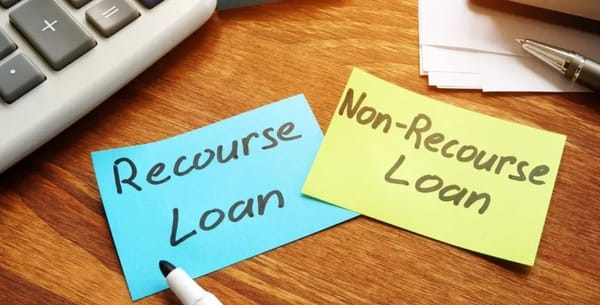Non-Amortizing Loan: Meaning, Types, Uses

Understanding the non-amortizing loan meaning and types is crucial for anyone considering alternative financing. A non-amortizing loan is a type of credit where the borrower doesn’t pay down the principal over time. Instead, the borrower typically makes interest-only payments or no payments during the term, and repays the full principal—sometimes with accumulated interest—at the end of the loan period.
This structure offers flexibility but also introduces higher financial risk if the borrower is unprepared for the final repayment.
What Is a Non-Amortizing Loan?

Definition of a Non-Amortizing Loan
A non-amortizing loan allows the borrower to delay repayment of the principal until the loan matures. During the term, payments may consist solely of interest, or the loan may be structured with deferred payments. At maturity, the borrower repays the full principal in a lump sum, also known as a balloon payment.
Non-Amortizing vs. Amortizing Loans
Here’s a quick comparison between amortizing and non-amortizing loans:
| Feature | Amortizing Loan | Non-Amortizing Loan |
|---|---|---|
| Principal Repayment | Monthly | At Maturity |
| Monthly Payment Structure | Principal + Interest | Usually Interest-Only |
| Risk Level | Lower | Higher |
| Equity Accumulation | Gradual | None until final payment |
Key Terms in Non-Amortizing Loans
Understanding the following terms is essential before choosing a non-amortizing loan:
- Balloon Payment: A large payment at the end of the loan term covering the full principal.
- Interest-Only Period: The phase where only interest payments are required.
- Lump-Sum Repayment: Full repayment of principal (and possibly interest) due at maturity.
- Deferred Payment: No payment until the loan matures.
- Zero-Coupon Loan: A type of non-amortizing loan where no payments are made until maturity.
Types of Non-Amortizing Loans

Interest-Only Loans
- Payments cover only the interest during the term.
- Principal remains intact and due at the end.
- Often used in real estate and investment finance.
Balloon Loans
- Regular interest or partial payments with a large final payment.
- Common in short-term commercial real estate deals.
- Requires clear refinancing or exit strategy.
Deferred Payment Loans
- No payments are made until the end of the loan.
- Both interest and principal are repaid at maturity.
- Often used in student loans or government programs.
Bullet Loans
- Entire loan principal is repaid in one “bullet” at maturity.
- Minimal or no interim payments.
- Often found in corporate finance.
Zero-Coupon Loans
- No periodic payments.
- Loan accumulates interest internally.
- Full amount due at maturity (principal + interest).
How Non-Amortizing Loans Work
Payment Structure
- Interest-Only Phase: Payments cover only interest.
- No Payment Phase: Common in deferred or zero-coupon structures.
- Maturity Phase: The full principal and possibly accumulated interest are repaid in one sum.
Interest Accumulation
Unlike amortizing loans, interest on non-amortizing loans may continue to accumulate without reducing the principal, which increases the total cost of the loan.
Real-World Applications of Non-Amortizing Loans
Who Uses Non-Amortizing Loans?
- Real Estate Developers
- Small Business Owners
- High Net-Worth Individuals
- Startup Founders
- Bond Investors (Zero-Coupon Bonds)
Common Use Cases
- Construction financing
- Inventory purchase
- Temporary cash flow gaps
- Leveraged investments
- Delayed-income borrowers (e.g., startups)
Benefits of Non-Amortizing Loans
Cash Flow Flexibility
- Ideal for borrowers with irregular or future income.
- Keeps monthly liabilities low during early phases.
Lower Monthly Payments
- Monthly outflows are minimal compared to amortizing loans.
- More capital can be reinvested or reserved.
Strategic Financial Planning
- Can align with expected liquidity events (e.g., sale of an asset).
- Often used as bridge financing between financing rounds or project milestones.
Drawbacks of Non-Amortizing Loans
High Final Payment Risk
- The large balloon payment at the end can be financially burdensome.
- Missed payments may lead to asset forfeiture or bankruptcy.
Higher Total Interest Costs
- Since the principal isn’t reduced, interest accrues on the full amount.
- Over the loan term, total cost can be significantly higher.
No Equity Building
- Unlike amortizing loans, equity isn’t built over time.
- In real estate, this can result in negative equity during downturns.
When to Use a Non-Amortizing Loan
Best-Fit Borrowers
- Entrepreneurs with growing revenues
- Real estate investors planning quick sales
- Individuals expecting a large inheritance or bonus
Loan Suitability by Term
- Short-Term Needs: Perfect for temporary financing needs
- Long-Term Needs: Risky without a guaranteed exit plan
Comparing Non-Amortizing and Amortizing Loans
Which Should You Choose?
Go with amortizing loans if:
- You prefer gradual equity building
- You want predictable payments
Opt for non-amortizing loans if:
- You have strong cash flow projections
- You're comfortable managing balloon payment risk
Loan Comparison Table
| Factor | Amortizing | Non-Amortizing |
|---|---|---|
| Payment Predictability | High | Low |
| Final Payment | None | Large |
| Risk | Lower | Higher |
| Equity Built | Yes | No |
Managing the Risks of Non-Amortizing Loans
Balloon Payment Planning
- Create a sinking fund
- Monitor real estate or business asset values
- Set alerts for maturity dates
Exit Strategy Options
- Refinancing: Convert to amortizing loan
- Asset Sale: Sell the asset to repay loan
- Equity Raise: Use investment capital to repay
Credit Impact
Failure to pay the balloon can severely damage credit. Prepare in advance or work with financial advisors to plan contingencies.
Legal and Regulatory Insights
Lender Obligations
- Must disclose balloon payment terms
- Provide detailed amortization schedules (if any)
- Comply with Truth in Lending Act (TILA)
Clauses to Watch
- Acceleration Clauses
- Prepayment Penalties
- Conversion Options
Economic Trends and Market Impact
Market Dynamics
- Attractive in low-interest environments
- Decline in popularity during inflationary periods
Impact on Real Estate
- Increases purchasing power temporarily
- Can create risk bubbles if overused
Borrower Psychology
- Delayed payments can create complacency
- May lead to financial strain when the loan matures
Frequently Asked Questions
What is a balloon payment in a non-amortizing loan?
A balloon payment is a large final payment of the entire principal, and possibly interest, due at the end of the loan term.
Are non-amortizing loans safe for new homebuyers?
No, they carry a high risk due to the large final payment and lack of equity building.
Can I refinance a non-amortizing loan?
Yes, refinancing is a common exit strategy before the balloon payment becomes due.
How is interest calculated?
Interest is typically calculated on the full principal since it remains unpaid during the loan term.
What if I can't make the balloon payment?
You may default, face legal action, or need to refinance. It’s critical to plan ahead.
Are these loans legal in all countries?
Yes, though some jurisdictions impose stricter regulations due to the risk profile.
Conclusion: Is a Non-Amortizing Loan Right for You?
Non-amortizing loans offer a powerful financial tool for those with a clear strategy and exit plan. They are best suited for savvy investors, developers, or businesses needing short-term flexibility. However, they come with significant risks—especially the balloon payment—that can lead to serious financial consequences if not properly managed.
Always weigh the non-amortizing loan meaning and types carefully against your financial goals, income stability, and repayment strategy before making a decision.




